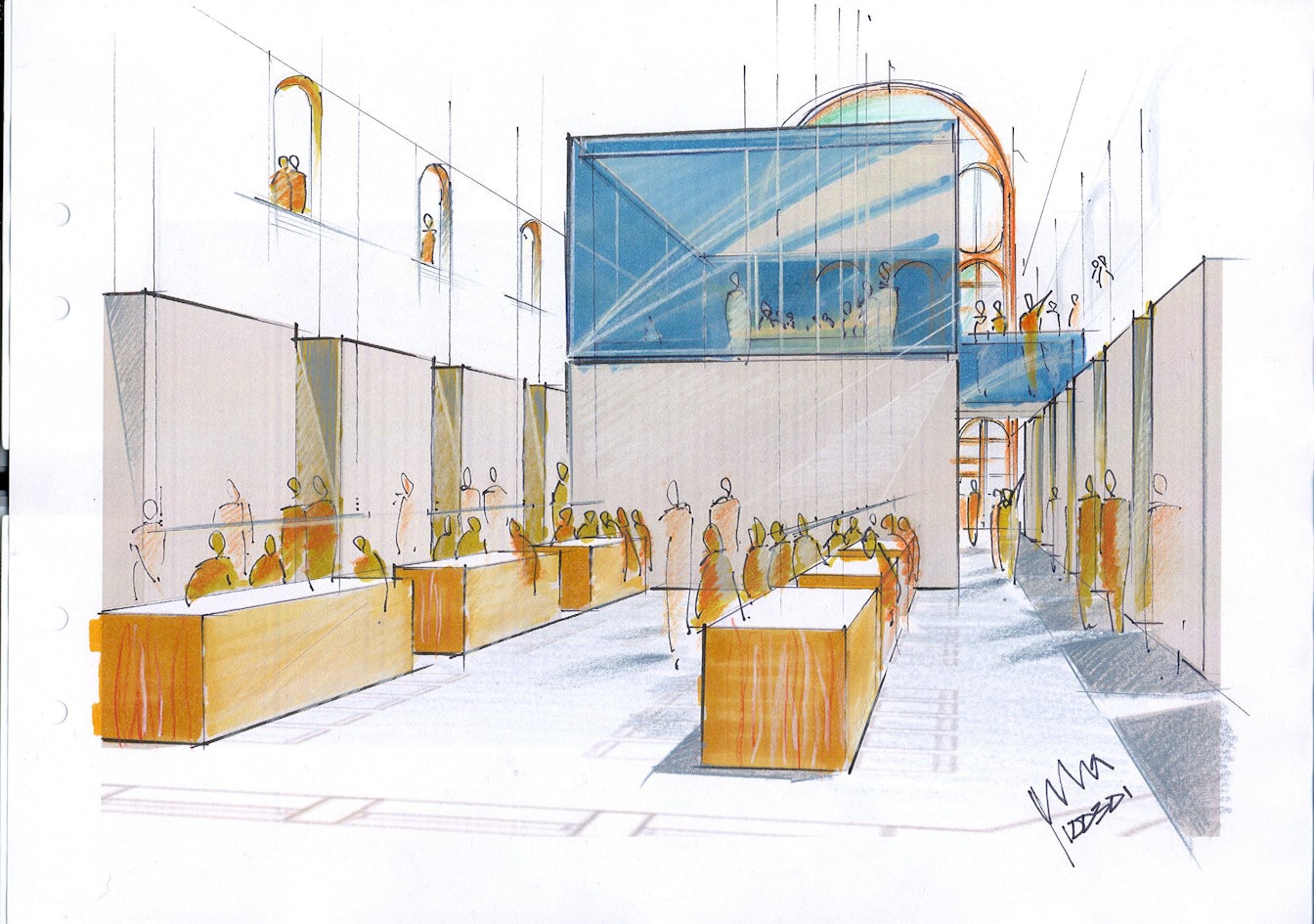In a world where architecture meets artistry, architectural illustration stands as a bridge between technical accuracy and visual storytelling. For centuries, it has served as the language architects use to communicate their vision, transforming abstract concepts into tangible imagery that clients, builders, and the public can understand. As technology advances, the craft is evolving into something more dynamic, interactive, and creative than ever before.
A Brief History of Architectural Illustration
Architectural illustration has a rich heritage, dating back to ancient civilizations. The Egyptians carved detailed building layouts into stone, while the Greeks and Romans used hand-drawn perspectives to depict grand temples and public spaces. During the Renaissance, artists like Leonardo da Vinci and Filippo Brunelleschi introduced accurate perspective drawing, revolutionizing how architecture was visualized.
By the 19th and 20th centuries, architectural drawings became more refined, moving from artistic sketches to technical blueprints. Watercolor renderings brought warmth and atmosphere to designs, while ink and graphite ensured precision. Today, architectural illustration continues to evolve, blending traditional techniques with advanced digital tools.
The Essence of Architectural Illustration
At its core, architectural illustration is about visual communication. An architect may have a vision in mind, but without a way to express it clearly, that vision risks being misunderstood. Illustrations fill this gap by:
- Explaining Scale and Proportion – Helping viewers understand the relationship between spaces, objects, and surroundings.
- Conveying Atmosphere – Capturing the mood of a design, whether it’s a cozy residential interior or a futuristic urban skyscraper.
- Highlighting Design Details – Showcasing intricate elements that might be overlooked in technical blueprints.
- Engaging Clients Emotionally – Inviting stakeholders to imagine themselves in the space.
While technical accuracy is essential, successful illustrations also evoke emotion. The best architectural illustrators strike a balance between precision and creativity.
Traditional vs. Digital Techniques
For centuries, hand-drawn illustrations were the standard. Artists used pencils, ink, watercolors, and markers to create lifelike perspectives. This method allowed for unique artistic flair, making each drawing a work of art in itself. Even today, many illustrators value the tactile nature of traditional tools.
However, the digital era has expanded the possibilities. Software like AutoCAD, SketchUp, and Revit allow for precise 3D modeling, while Photoshop and Procreate add realistic textures and lighting effects. Digital rendering enables quick adjustments, multiple iterations, and photorealistic results. Virtual reality (VR) and augmented reality (AR) now allow clients to “walk through” a space before it’s built.
The combination of traditional and digital techniques has led to a hybrid approach, where hand-drawn sketches are scanned and enhanced digitally. This fusion retains the warmth of handcraft while benefiting from technological precision.
The Role of Storytelling in Illustration
One of the most powerful aspects of architectural illustration design is its ability to tell a story. Rather than simply showing a structure, illustrators can depict life within it. This might mean illustrating people walking through a plaza, sunlight filtering through windows, or lush greenery surrounding a building.
Storytelling helps clients and the public visualize how a space will be used and experienced. It turns a static image into a living environment, making the design more relatable and memorable.
Emerging Trends Shaping the Future
The field of architectural illustration is undergoing rapid transformation. Some of the most exciting developments include:
- Photorealistic Rendering – Modern rendering engines produce images nearly indistinguishable from real photographs, helping architects present their designs with stunning realism.
- Virtual and Augmented Reality – Instead of static images, VR and AR allow viewers to explore spaces interactively, changing perspectives at will.
- AI-Powered Illustration – Artificial intelligence can now assist in creating preliminary renderings, optimizing lighting, or generating concept variations quickly.
- Sustainable Design Representation – Illustrations increasingly highlight eco-friendly features like solar panels, green roofs, and natural ventilation systems.
- Cinematic Presentation Styles – Inspired by film and video games, some illustrations now incorporate dramatic angles, depth of field, and atmospheric effects to create a more immersive experience.
Skills Needed for a Successful Architectural Illustrator
Being an architectural illustrator requires more than just technical skill. It demands an understanding of architecture, design principles, and visual art. Key skills include:
- Perspective Drawing – Mastery of one-point, two-point, and three-point perspectives.
- Light and Shadow Rendering – Understanding how light interacts with forms and materials.
- Material Representation – Accurately depicting wood, metal, glass, concrete, and other surfaces.
- Software Proficiency – Skills in CAD, 3D modeling, and digital painting tools.
- Creative Interpretation – The ability to enhance a design’s emotional appeal without distorting its accuracy.
The Business Side of Architectural Illustration
With demand growing, architectural illustration has become a specialized service offered by freelancers, agencies, and in-house design teams. Illustrators work closely with architects, interior designers, real estate developers, and marketing agencies. High-quality illustrations are used in presentations, investor proposals, public consultations, and promotional materials.
In competitive markets, a striking illustration can make the difference between winning and losing a project bid. For real estate marketing, illustrations help sell unbuilt properties by giving buyers a clear vision of the final product.
The Future of Architectural Illustration
Looking ahead, the boundaries between illustration, animation, and immersive technology will continue to blur. As cities grow and sustainability becomes a priority, illustrations will play a key role in communicating innovative solutions to complex urban challenges.
Imagine architectural presentations that combine photorealistic stills, animated sequences, and VR walkthroughs—all seamlessly integrated. AI could further streamline workflows, allowing illustrators to focus more on creativity and less on repetitive tasks.
While technology will drive much of the change, the human element will remain vital. Great architectural illustration design depends not just on tools, but on the illustrator’s ability to see beyond the plans—to capture the spirit of a space that doesn’t yet exist.
Conclusion
Architectural illustration has come a long way from ink sketches on parchment. Today, it’s a sophisticated blend of art, design, and technology, capable of evoking emotion and inspiring action. Whether drawn by hand or rendered in 3D, these illustrations are more than just pictures—they are visions of the future, framed in lines and brought to life with color, light, and imagination.
In the years to come, we can expect the craft to become even more immersive, interactive, and expressive. Yet at its heart, it will always be about the same thing: helping people see and feel the places we dream of building.



